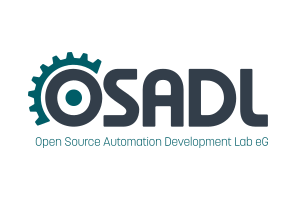Dates and Events:
|
OSADL Articles:
2023-11-12 12:00
Open Source License Obligations Checklists even better nowImport the checklists to other tools, create context diffs and merged lists
2022-07-11 12:00
Call for participation in phase #4 of Open Source OPC UA open62541 support projectLetter of Intent fulfills wish list from recent survey
2022-01-13 12:00
Phase #3 of OSADL project on OPC UA PubSub over TSN successfully completedAnother important milestone on the way to interoperable Open Source real-time Ethernet has been reached
2021-02-09 12:00
Open Source OPC UA PubSub over TSN project phase #3 launchedLetter of Intent with call for participation is now available |
OSADL QA Farm on Real-time of Mainline Linux
About - Hardware - CPUs - Benchmarks - Graphics - Benchmarks - Kernels - Boards/Distros - Latency monitoring - Latency plots - System data - Profiles - Compare - Awards
Wakeup latency of all systems - Real-time optimization - Peer-to-peer UDP duplex link - OPC UA PubSub over TSN - Powerlink - Ethercat - Network load - kvm - Sleep states
Real-time Ethernet using OPC UA PubSub over TSN (demonstrator)
Overview - Peer-to-peer - Star topology - Demonstrator (TSN) - Heterogeneous peer-to-peer - Demonstrator (OPC UA PubSub over TSN)
A demonstrator with a 2-node network using embedded 4-core Intel Apollo Lake Linux systems with Intel I210 controllers was setup in order to demonstrate the real-time performance of OPC UA PubSub over TSN. Technical and configuration data of the main components of the demonstrator can be obtained through the standard OSADL QA Farm interfaces where they are integrated in rack "f".
Rack #f, slot #3 (Grandmaster) | ||
Rack #f, slot #3s (Slave) |
TSN grandmaster and OPC UA PubSub sender/receiver: Round-trip time with four segments each of 250 µs
Last update 1 minute ago
-
- Please note that the recorded values of this plot represent the maximum of subsequent 5-min intervals. One test interval consists of 1.000.000 packets. The round-trip time is expected to be a multiple of 250 µs. The best possible round-trip time is 1ms.




